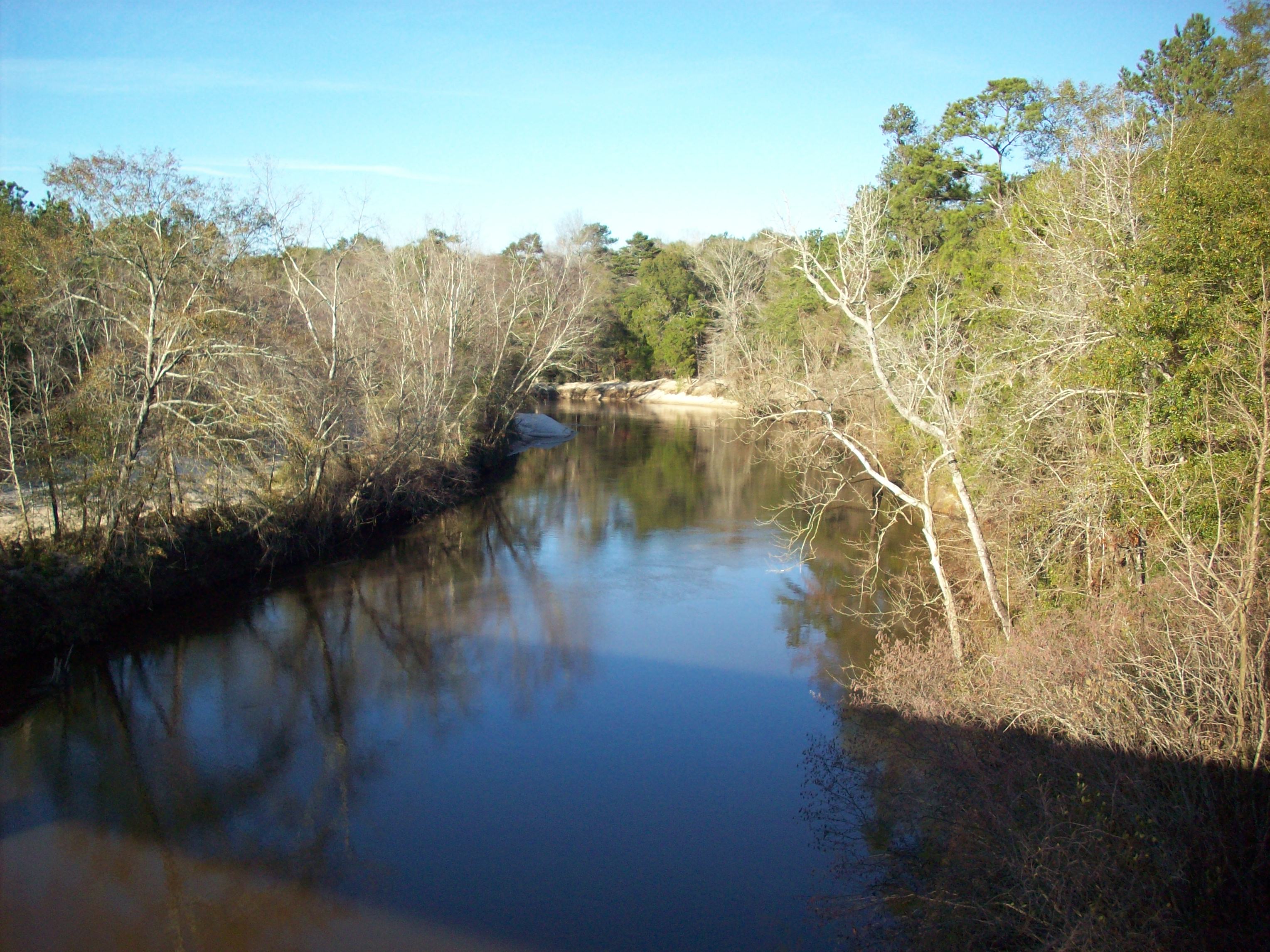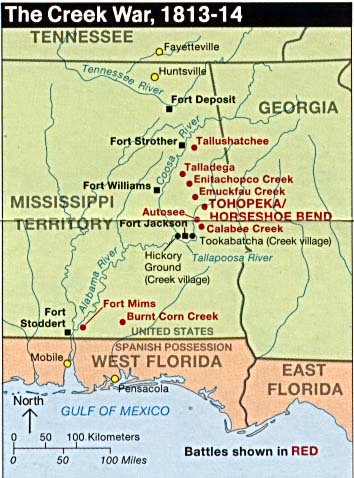|
Dale County, Alabama
Dale County is a county located in the southeastern part of the U.S. state of Alabama. As of the 2020 census the population was 49,326. Its county seat and largest city is Ozark. Its name is in honor of General Samuel Dale. Dale County comprises the Ozark, AL Micropolitan Statistical Area, which is also included in the Dothan-Ozark, AL Combined Statistical Area. It was originally a part of Enterprise–Ozark micropolitan area before being split, and for a longer while was originally part of the Dothan-Enterprise-Ozark combined statistical area but Coffee County is now its own separate primary statistical area in later censuses. The vast majority of Fort Rucker is located in Dale County. History The area now known as Dale County was originally inhabited by members of the Creek Indian nation, who occupied all of southeastern Alabama during this period. Between the years of 1764 and 1783 this region fell under the jurisdiction of the colony of British West Florida. The county, ... [...More Info...] [...Related Items...] OR: [Wikipedia] [Google] [Baidu] |
Samuel Dale
Samuel Dale (1772 – ), known as the "Daniel Boone of Alabama", was an American frontiersman, trader, miller, hunter, scout, courier, soldier, spy, army officer, and politician, who fought under General Andrew Jackson, in the Creek War, later, becoming a brigadier general in the U.S. Army, and an advocate for Alabama statehood. Samuel Dale was born in 1772, in Rockbridge County, Virginia to Scotch-Irish parents from Pennsylvania. As a boy, both he and his parents moved, many times, with westward border expansion, most notably in 1775 and 1783. With the death of his parents in December 1792, he was responsible for the welfare of eight younger children. From 1793–96 he served as a United States Government scout. He abandoned work as a trader between Savannah, Georgia and the border settlements and as a mill owner-operator to guide immigrants into Mississippi, over Native American lands. Dale was present, in 1811, when Tecumseh enlisted local Alabama Native Americans ... [...More Info...] [...Related Items...] OR: [Wikipedia] [Google] [Baidu] |
Creek Indian
The Muscogee, also known as the Mvskoke, Muscogee Creek, and the Muscogee Creek Confederacy ( in the Muscogee language), are a group of related indigenous peoples of the Southeastern Woodlands, indigenous (Native American) peoples of the Southeastern WoodlandsTranscribed documents Sequoyah Research Center and the American Native Press Archives in the United States, United States of America. Their original homelands are in what now comprises southern Tennessee, much of Alabama, western Georgia (U.S. state), Georgia and parts of northern Florida. Most of the Muscogee people were forcibly Indian Removal, removed to Indian Territory (now Oklahoma) by the federal government in the 1830s during the Trail of Tears. A small group of the Muscogee Creek Confederacy remained in Alabama, and t ... [...More Info...] [...Related Items...] OR: [Wikipedia] [Google] [Baidu] |
20th Maine Volunteer Infantry Regiment
The 20th Maine Infantry Regiment was a volunteer regiment of the United States Army (Union Army) during the American Civil War (1861–1865), most famous for its defense of Little Round Top at the Battle of Gettysburg in Gettysburg, Pennsylvania, July 1–3, 1863. The 133rd Engineer Battalion of the Maine Army National Guard and the United States Army today carries on the lineage and traditions of the 20th Maine. Organization The 20th Maine was organized in the state of Maine and mustered into federal service on August 29, 1862, with Col. Adelbert Ames as its commander. It was assigned to the Army of the Potomac in the 3rd Brigade, 1st Division, V Corps, where it would remain until mustered out on July 16, 1865. At that time, the brigade also consisted of the 16th Michigan, the 12th, 17th, and 44th New York, 83rd Pennsylvania Volunteer Infantry regiments, and a Michigan company of sharpshooters. Combat history Prior to their notable actions at Gettysburg in July 1863, the regi ... [...More Info...] [...Related Items...] OR: [Wikipedia] [Google] [Baidu] |
15th Regiment Alabama Infantry
The 15th Alabama Infantry Regiment was a Confederate volunteer infantry unit from the state of Alabama during the American Civil War. Recruited from six counties in the southeastern part of the state, it fought mostly with Robert E. Lee's Army of Northern Virginia, though it also saw brief service with Braxton Bragg and the Army of Tennessee in late 1863 before returning to Virginia in early 1864 for the duration of the war. Out of 1958 men listed on the regimental rolls throughout the conflict, 261 are known to have fallen in battle, with sources listing an additional 416 deaths due to disease. 218 were captured (46 died), 66 deserted and 61 were transferred or discharged. By the end of the war, only 170 men remained to be paroled. The 15th Alabama is most famous for being the regiment that confronted the 20th Maine on Little Round Top during the Battle of Gettysburg on July 2, 1863. after several ferocious assaults, the 15th Alabama was ultimately able to dislodge the Uni ... [...More Info...] [...Related Items...] OR: [Wikipedia] [Google] [Baidu] |
Newton, Alabama
Newton is a town in Dale County, Alabama, United States. At the 2010 census its population was 1,511. Once the county seat of Dale County, Newton lost this distinction to nearby Ozark in 1870, and is now a small farming community. It incorporated in 1887. The city currently forms a part of the Ozark micropolitan statistical area. Geography Newton is located at 31°21′N 85°36′W (31.344,-85.593). According to the U.S. Census Bureau, the town has a total area of , of which is land and (0.21%) is water. The Choctawhatchee River flows just to the north and west of Newton. At one time this waterway was navigable by steamboat from its mouth in Choctawhatchee Bay, Florida all the way to Newton. Alabama State Route 123 and Alabama State Route 134 both pass through Newton. History Newton was founded in 1843 after the formation of Coffee County from Dale County's western half, which rendered the original county seat of Daleville off-center. The town was a scene for Confederat ... [...More Info...] [...Related Items...] OR: [Wikipedia] [Google] [Baidu] |
Daleville, Alabama
Daleville is a city in Dale County, Alabama, United States. At the 2010 census the population was 5,295, up from 4,653 in 2000. It is part of the Ozark Micropolitan Statistical Area. The city's nickname is "Gateway to Fort Rucker", as this U.S. Army post is located just north of town. Cairns Army Airfield is located to the south of Daleville on the road to nearby Clayhatchee. History Daleville, originally known as "Dale's Court House", was founded in 1827 by veterans of the Creek Indian War who had settled in Dale County following that conflict. It was established as the original county seat of Dale County in 1827 but lost that honor when Coffee County split from Dale in 1841, at which time the seat was moved first to Newton, and then later to Ozark in 1870, where it remains today. The name of Daleville was adopted in 1848. Daleville voted to incorporate in 1912, but rescinded it in 1916. It later voted for incorporation in 1958. Residents of the town formed portions of tw ... [...More Info...] [...Related Items...] OR: [Wikipedia] [Google] [Baidu] |
Houston County, Alabama
Houston County is a county located in the southeastern corner of the U.S. state of Alabama. As of the 2020 census the population was 107,202. Its county seat is Dothan, which is located on the border and partially in adjacent Henry County. Houston County is part of the Dothan, Alabama metropolitan area. History Houston County was established on February 9, 1903, from parts of Dale, Geneva, and Henry counties. It was named after George Smith Houston, the 24th Governor of Alabama. This area of the state was historically developed for the pine timber and turpentine industries, as well as cotton plantations. The latter, especially, depended on enslaved African Americans for labor. Because of this history, African Americans predominated in the population until after the early 20th century, when many migrated to northern and midwestern cities for better economic opportunities and to escape Jim Crow discrimination. They were essentially disenfranchised after the turn of the 20th c ... [...More Info...] [...Related Items...] OR: [Wikipedia] [Google] [Baidu] |
Geneva County, Alabama
Geneva County is a county located in the southeastern part of the U.S. state of Alabama. As of the 2020 census, the population was 26,659. Its county seat is Geneva. The county was named after its county seat, which in turn was named after Geneva, New York which was named after Geneva, Switzerland, by Walter H. Yonge, an early town resident and Swiss native. Geneva County is a dry county in certain areas. Beer and wine are sold in Geneva, Samson, and Slocomb, but it isn't sold in any capacity in Hartford. Geneva County is part of the Dothan, AL Metropolitan Statistical Area. History Geneva County was established on December 26, 1868. The county was declared a disaster area in September 1979 due to damage from Hurricane Frederic. On March 10, 2009, a gunman, identified as Michael McLendon, went on a shooting spree at nine locations in Geneva County from the town of Samson to the city of Geneva, killing ten people and wounding six others. McLendon entered his former place o ... [...More Info...] [...Related Items...] OR: [Wikipedia] [Google] [Baidu] |
Coffee County, Alabama
Coffee County is a county located in the southeastern part of the U.S. state of Alabama. As of the 2020 census, the population was 53,465. Its name is in honor of General John Coffee. Coffee County comprises the Enterprise, Micropolitan Statistical Area, which was originally Enterprise–Ozark micropolitan area in 2010 censuses before being split off. It was originally included in the Dothan-Enterprise-Ozark, Combined Statistical Area in its 2012 statistics but the area in its recent years has been separated from the Dothan metropolitan area and Ozark micropolitan area in later censuses and is its own primary statistical area now. Despite the census change of the statistics by the United States Census Bureau, the county still remains culturally connected alongside the two core based areas as it is commonly described as part of what is called the Wiregrass region together and also it shares its locations of United States army base, Fort Rucker. The county seat is mostly know ... [...More Info...] [...Related Items...] OR: [Wikipedia] [Google] [Baidu] |
Native Americans In The United States
Native Americans, also known as American Indians, First Americans, Indigenous Americans, and other terms, are the Indigenous peoples of the mainland United States ( Indigenous peoples of Hawaii, Alaska and territories of the United States are generally known by other terms). There are 574 federally recognized tribes living within the US, about half of which are associated with Indian reservations. As defined by the United States Census, "Native Americans" are Indigenous tribes that are originally from the contiguous United States, along with Alaska Natives. Indigenous peoples of the United States who are not listed as American Indian or Alaska Native include Native Hawaiians, Samoan Americans, and the Chamorro people. The US Census groups these peoples as " Native Hawaiian and other Pacific Islanders". European colonization of the Americas, which began in 1492, resulted in a precipitous decline in Native American population because of new diseases, wars, ethni ... [...More Info...] [...Related Items...] OR: [Wikipedia] [Google] [Baidu] |
Choctawhatchee River
The Choctawhatchee River is a U.S. Geological Survey. National Hydrography Dataset high-resolution flowline data. The National Map , accessed 15 April 2011 river in the southern United States, flowing through southeast Alabama and the Panhandle of Florida before emptying into Choctawhatchee Bay in Okaloosa and Walton counties. The river, the bay and their adjacent watersheds collectively drain . Overview The Choctawhatchee originates as two separate forks (East Fork and West Fork) in Barbour County, Alabama; the East Fork flows through Henry County and joins the West Fork in eastern Dale County about four miles (6 km) above Newton. The unified river then flows southwest through Dale and Geneva counties into Florida, collecting tributaries along the way: the Little Choctawhatchee River in Dale County, and the Pea River near Geneva. It then flows south into Florida, terminating at Choctawhatchee Bay. Other Alabama tributaries are Claybank Creek and Tight Eye Creek. On ... [...More Info...] [...Related Items...] OR: [Wikipedia] [Google] [Baidu] |
Creek War
The Creek War (1813–1814), also known as the Red Stick War and the Creek Civil War, was a regional war between opposing Indigenous American Creek factions, European empires and the United States, taking place largely in modern-day Alabama and along the Gulf Coast. The major conflicts of the war took place between state militia units and the "Red Stick" Creeks. The United States government formed an alliance with the Choctaw Nation and Cherokee Nation (the traditional enemies of the Creeks), along with the remaining Creeks to put the rebellion down. According to historian John K. Mahon, the Creek War "was as much a civil war among Creeks as between red and white, and it pointed up the separation of Creeks and Seminoles". The war was also part of the centuries-long American Indian Wars. It is usually considered part of the War of 1812 because it was influenced by Tecumseh's War in the Old Northwest, was concurrent with the American-British portion of the war and involved m ... [...More Info...] [...Related Items...] OR: [Wikipedia] [Google] [Baidu] |






